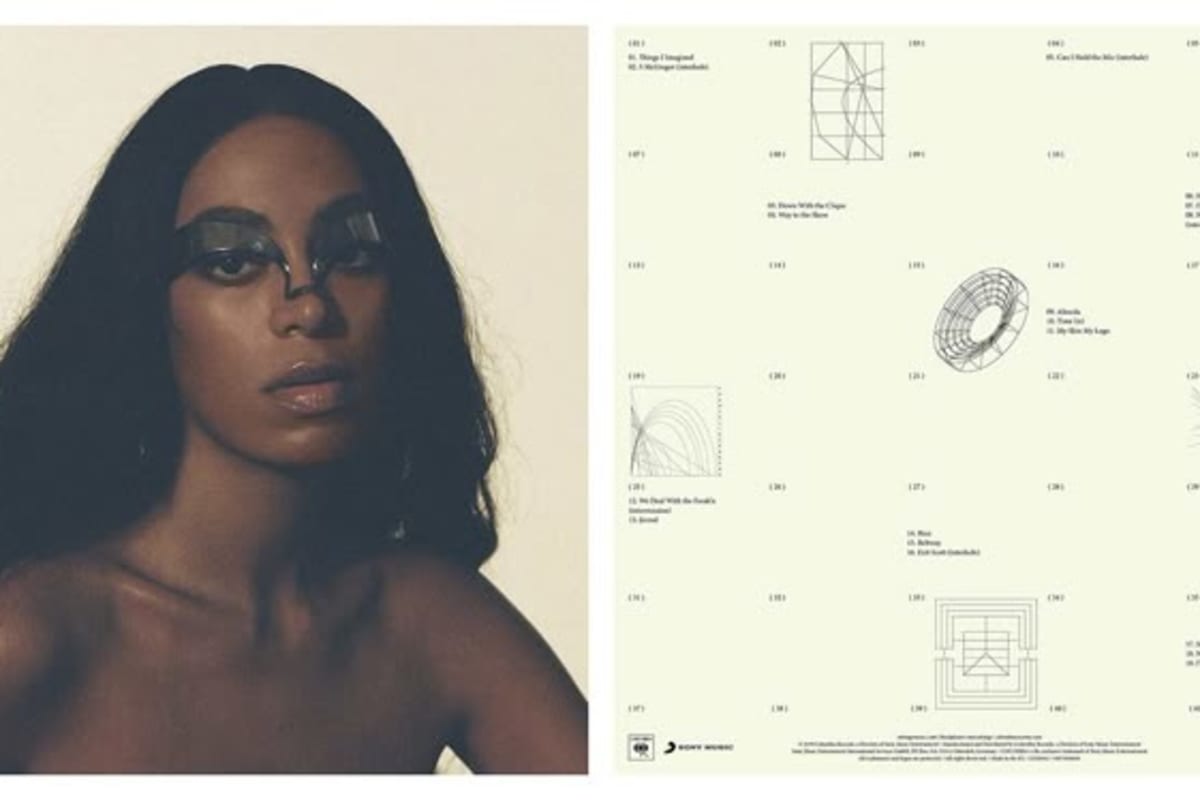One of my favorite bodies of work ever created–and a musical masterpiece–is Solange’s When I Get Home. I rediscovered this album on a cloudy Sunday facing the many travails of being in your 20s. I listened to the Can I Hold the Mic interlude first because of an earlier musing/epiphany that occurred earlier. It was very reassuring to know that I have the capacity to embody different versions of myself and revisit them time and time again; I am an infinite being.
"I can’t be a singular expression of myself,
There’s too many parts, too many spaces,
Too many manifestations, too many lines.
"
She wades through the thoughts that plague me, and her message cements itself within me. That’s the power of great music, and Solange is a masterful holder of this power. To me, her third eye is open.
Solange is a shapeshifter, proven by the way she flows through genres so easily. She pays homage to R&B, moves to jazz, flourishes in psychedelic tunes; there’s trap and there’s neo-soul as well. All of these are filled with an intentional motivation to pass across the message of her art. On a wider scale, it is an ode to her hometown, Houston, Texas. This is something the Knowles sisters have in common: representing and embodying their legacies. Almeda is a prime example of this. I love that song. The background layering, her voice, the vibrant bass—all of these elements come together to make sonic perfection. Her voice here is deliciously falsetto; the vibe is lowkey and chill. You cannot replicate this level of cool—it is innate. There is a steady trap beat underneath it all, holding the momentum, and it leaves you nodding your head to the rhythm. Sip, sip, sip, sip, sip drags you further into the music’s hypnotic quality. There are rich vocal ad libs that characterize this track and add to its dynamicism. It is fabulously Black and unrepentantly so. Playboi Carti was an excellent feature –the way he slides in easily to the already brilliant foundation of a peak melody, making it an easy favorite for many.
I’m obsessed with Time (Is); a track that further reinforces the soft jazz elements that characterize the album. Solange shapeshifts yet again into a soulful siren, one that makes you reminisce about times unique to you. Tyler, the Creator’s vocals fantastically complement Solange’s; a master of his craft in his own right, and they both create an eclectic tune—a sharp contrast to Almeda.
There are many references to Houston culture, specifically the Black cowboys who pioneered fundamental parts of this culture and contributed to its existence. Even though they have been majorly excluded from its notability, they made up nearly a quarter of all the cattle workers in America at the time. They were prominent and alive in Texas; they set foot and made an impact there. Their labor, blood, sweat, and grit are all in that land, and Solange, aware of this, writes this album as a love letter to the ones before her. Being a cowboy offered people genuine self-governance, at least in theory, and many African Americans who left the South after the failures of Reconstruction migrated to cattle country, particularly Kansas. This mass migration was dubbed the Great Exodus, and its migrants were known as “Exodusters.” These pioneers were drawn West by new land laws such as the Homestead Act of 1862, which allowed settlers to claim 160 acres (65 hectares) of government-surveyed land as long as they “improved” it through cultivation. Many Exodusters trained as ranch hands and drovers in their new environs. — (“Roland Martin, Magazine, 2025”).
Imagining the reality of existence back then, the cowboys were important people who lived. Their strength is an example of true tapping in—children of African descent should take note. This is exactly what the body of work is for. Listening to it reminds you of the importance of knowing who you are, embracing change even in its discomfort, returning to self always, growing old selves instead of eliminating them, manifesting and embodying another gorgeous version of who you are, just like the cowboys did. They kept on, and so we must keep on.
This is a powerful manifestation album. Many songs open your eyes and break down walls to help you envision yourself in a higher place. One of which is the very first—Things I Imagined. As the name implies, you are not just who your current situation says you are; Solange affirms that there is a version of yourself you can be if you envision it. The swirly instrumentals have an allure to them, a very tasteful infusion. There is the soft hum of a piano while she says the one tangible lyric of the entire song: I saw things I imagined, like a prayer, chanting it repeatedly till it becomes your reality.
Another personal gem for manifestation is Binz. The laid-back feel of the song inspires you to envision a life of ease, one where you wake up to the sun and abundance. One where you get the presidential suite and leave with their linen. It’s very potent for money manifestation, even the gods have great taste. And let’s not forget the immaculate transition from Jerrod to this song. Genuinely, there are no skips.
The organ is a prominent feature of this album, introduced on first listen. It immediately entraps the listener into a reverent state—one similar to the feeling of worship. You are inside Solange’s mind, seeing things you imagined as a child in Houston. As she said in an interview with Trevor Noah, “You know I am a Black woman, so the work will always be through the lens of a Black woman? I think we’re the most popping ones.” She stays true to this subsequently. In this album, we get to see Solange beyond the surface—her personal experience with finding a sense of home and how going back to Houston greatly helped her see who she is as an individual and as a descendant of her birthplace. There are many profound takeaways to enjoy as a listener while also consuming its pleasurable auditory content. This, as I have said, is what music is about. Contrary to recent opinions, it is very possible to be in tune with your craft and still profit off of it; dare I say it is the way it should be. In giving us a piece of herself, Solange has challenged us to also reach within ourselves and sit with difficult emotions, because in the end, you have the capacity to create magic despite the noise.
When I Get Home is a work of art; it is ephemeral. It is not enough that you simply listen to the music; it also compels you to look beyond the surface, to awaken from the lulled mind of this capitalist system and remember who you’ve always been. As a creator, it is an inspiring body of work; as an individual, it is a reminder of the importance of one’s heritage and upbringing and urges you to become your ideal self. This is your sign to give this album a relisten/listen, as well as your sign to tap into the voice of the universe, of self.


